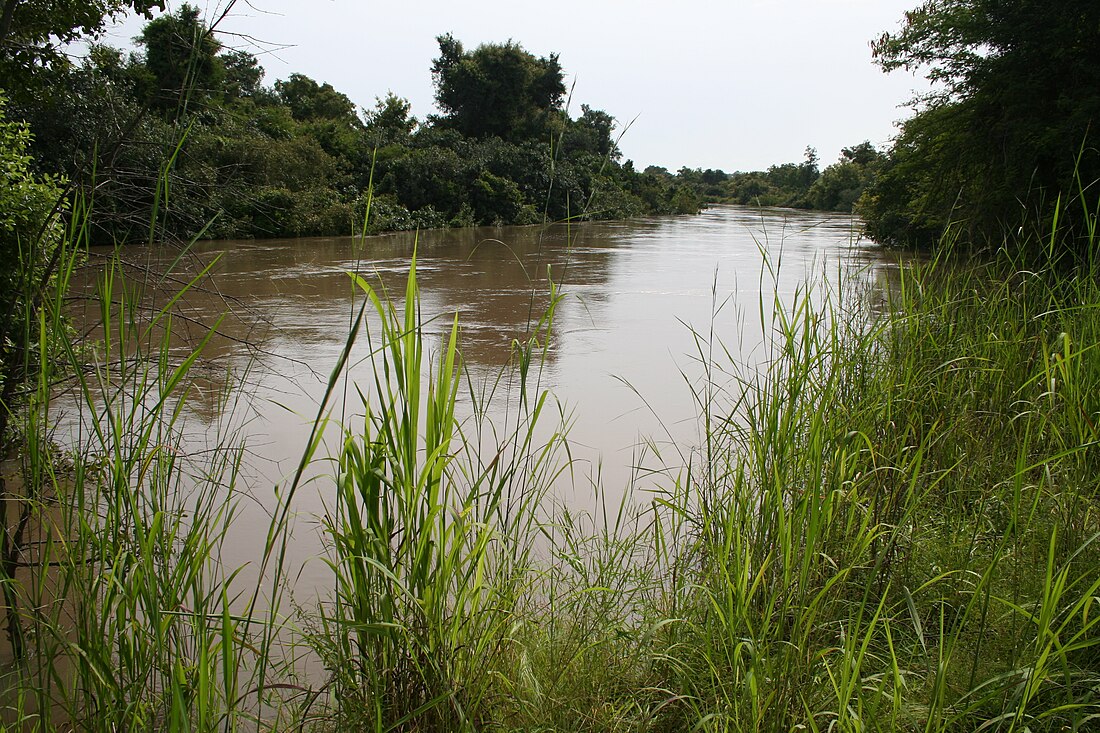Top Qs
Timeline
Chat
Perspective
W National Park
National park in West Africa From Wikipedia, the free encyclopedia
Remove ads
The W National Park (French: Parc national du W)[1] or W Regional Park (French: W du Niger) is a major national park in West Africa around a meander in the Niger River shaped like the letter W (French: double v). The park includes areas of the three countries Niger, Benin and Burkina Faso, and is governed by the three governments. Until 2008, the implementation of a regional management was supported by the EU-funded project ECOPAS (Protected Ecosystems in Sudano-Sahelian Africa, French: Écosystèmes protégés en Afrique soudano-sahélienne). The three national parks operate under the name W Transborder Park (French: Parc régional W).[2] The section of W National Park lying in Benin, measuring over 8,000 km2 (3,100 sq mi), came under the full management of African Parks in June 2020.[3] In Benin, W National Park is contiguous with Pendjari National Park which is also under the management of African Parks.
Remove ads
History
The W National Park of Niger was created by decree on 4 August 1954, and since 1996 has been listed as a UNESCO World Heritage Site. Within Niger, the Park is listed as a National Park, IUCN Type II, and is part of a larger complex of Reserves and protected areas. These include the adjacent Dallol Bosso (Wetlands of International Importance (Ramsar) on the eastern bank of the Niger River and the partial overlap of the smaller "Parc national du W" (Wetlands of International Importance (Ramsar).[4] The three parks are BirdLife International Important Bird Areas (IBAs) of types A1 and A3 (IBA codes IBA NE001, IBA BF008, and IBA BJ001).
Violence
On 8 February 2022, two African Parks patrol vehicles in Benin's portion of the W National Park ran over land mines suspected to be planted by Islamic terrorists, killing eight people.
On 25–26 July 2024, five Beninese park rangers and seven soldiers were killed in a gun attack inside the park.[5]
On 17 April 2025, 54 Beninese soldiers were killed in an attack inside the park that was claimed by Jama'at Nasr al-Islam wal-Muslimin.[6]
Remove ads
Geography

In the three nations, the regional park covers some 10,000 km2 (3,900 sq mi) largely uninhabited by humans, having been until the 1970s a malarial zone of wetlands formed by the delta of the Mékrou River with the Niger, broken by rocky hills. Historically, the area has been at one time a major area of human habitation, judged by the important archaeological sites (mostly tombs) found in the area.
Remove ads
Flora
A total of 454 species of plants were recorded in the park, including two orchids found only in Niger. The park also constitutes the southern limit of tiger bush plateaus distribution in Niger.
Fauna
The park is known for its large mammals, including aardvark, baboon, African buffalo, caracal, cheetah, African bush elephant, hippopotamus, African leopard, West African lion, serval and warthog. The park provides a home for some of West Africa's last wild African elephants. However, the rare West African giraffe, today restricted to small parts of the Niger, is absent from the area. The W park is also known for historic occurrence of packs of the endangered West African wild dog,[7] although this canid may now be locally extinct.[8]
The park is one of the last strongholds for the Northwest African cheetah. A small population of 25 individuals is estimated to be resident across the W–Arli–Pendjari protected area complex.[9]
The W National Park is also known for its bird populations, especially transitory migrating species, with over 350 species identified in the park.[10] The park has been identified by BirdLife International as an Important Bird Area.[11]
Remove ads
Gallery
- Bush elephants
- Kob antelope
- Landscape
See also
References
Literature
External links
Wikiwand - on
Seamless Wikipedia browsing. On steroids.
Remove ads








